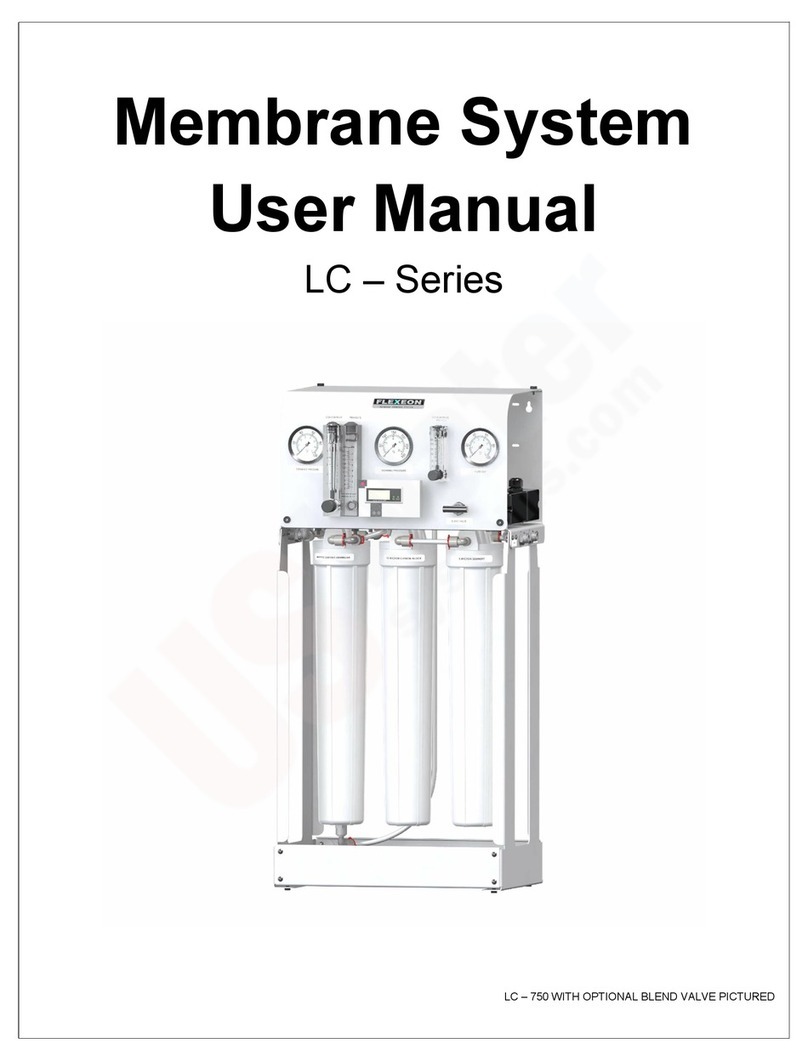
L1-Series User’s Manual
MKTF-258 3 9/14
TABLE OF CONTENTS
INTRODUCTION ....................................................................................................................................... 4
SAFETY ..................................................................................................................................................... 5
FEED WATER AND OPERATION SPECIFICATIONS .................................................................................... 6
REJECTION, RECOVERY AND FLOW RATES .............................................................................................. 7
SYSTEM INSTALLATION AND START-UP PROCEDURES ............................................................................ 8
MEMBRANE ELEMENTS ......................................................................................................................... 10
SYSTEM IDENTIFICATION ....................................................................................................................... 11
MEMBRANE INSTALLATION, REMOVAL AND REPLACEMENT ............................................................... 1
OPERATION DO’S AND DON’TS ............................................................................................................. 14
SPECIFICATIONS ..................................................................................................................................... 15
OPERATION AND MAINTENANCE .......................................................................................................... 16
PREPARING UNIT FOR STORAGE OR SHIPMENT.................................................................................... 17
REVERSE OSMOSIS TROUBLESHOOTING ............................................................................................... 18
TEMPERATURE CORRECTION FACTORS FOR MEMBRANE .................................................................... 0
SERVICE ASSISTANCE ............................................................................................................................. 1
OPERATION LOG ....................................................................................................................................
SYSTEM DRAWING ................................................................................................................................. 3
L1- 00 SERIES FLOW DIAGRAM ............................................................................................................. 4
L1 - SERIES ELECTRICAL SCHEMATIC 110V/60HZ .................................................................................. 4
L1 - SERIES ELECTRICAL SCHEMATIC 0V/50HZ .................................................................................. 6
REVERSE OSMOSIS SYSTEM WARRANTY ............................................................................................... 7




























